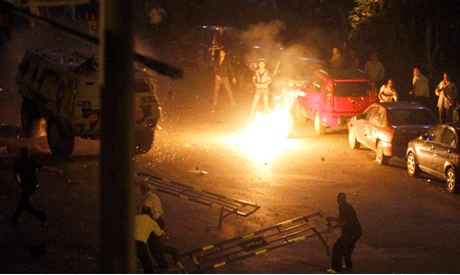
Egyptian state TV's coverage of the military's attack on demonstrators at Maspero has been condemned for alleged bias and incitement of violence against Copts (Photo: Reuters)
A committee of experts appointed to investigate media coverage of last week’s violent Maspero clashes has found that, while state television may have committed "professional errors" it did not intentionally incite violence against unarmed protesters.
Nevertheless, the committee, drawn up by Information Minister Osama Heikal in the wake of the incident, called for an immediate investigation into media personnel involved in the coverage.
A report issued by the committee on Monday stated that coverage of the clashes by state television had revealed both a lack of journalistic training and experience. The coverage did not, however, incite viewers to violence against protesters, the committee found.
The report also criticised the performance of state television presenter Rasha Magdy, who, during the clashes, had urged Egyptians to join the fray to defend soldiers from what she described as “violent protesters.” Her live report has since been circulated over social media as proof that state television had, in fact, incited viewers against Coptic protesters.
At a press conference last week, a number of eyewitnesses recalled seeing groups of local residents chanting anti-Coptic slogans and saying they had come to the area to defend embattled army personnel.
In statements to Egypt’s official MENA news agency, Heikal defended state television from charges of incitement, but conceded that official coverage of the violent clashes had been “biased to a degree.” Heikal added that the committee's recommendations had been referred to Tharwat Mekki, head of Egypt’s state-run Radio and Television Union, who would take the appropriate action.
Last week, Egypt’s ruling military council held a press conference to give its account of the incident. At the conference, council members denied that army units had used live ammunition to disperse demonstrators, insisting that soldiers had been outfitted only with anti-riot gear.
Council officials went on to strenuously deny that military vehicles had been used to intentionally run over protesters, despite eyewitness accounts and video footage suggesting otherwise.
A number of eyewitnesses, meanwhile, have also attested that military police had initiated the violence when they opened fire on unarmed protesters without provocation.
An official fact-finding committee is expected to release a final report on the incident – which left at least 26 dead and hundreds injured – within two to three weeks.
Short link: